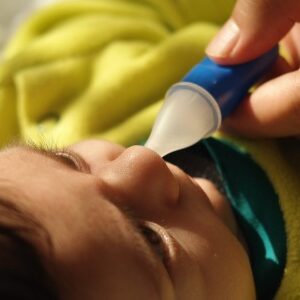What Happens When Facial Function Is Lost?
Facial paralysis or weakness results in reduced muscle activity on one side of the face. This can cause drooping eyelids, an uneven smile, and difficulty closing the eyes or moving facial muscles naturally. The inability to express emotions fully not only affects social interactions but can also influence psychological well-being. For many, the distorted appearance may lead to feelings of self-consciousness or withdrawal.
Restoring facial function involves more than just aesthetics; it is about improving communication, protecting eye health, and supporting overall quality of life.
How Botox Supports Facial Recovery
Botox, a purified protein, works by temporarily relaxing muscles that are overactive or involuntarily contracting. In facial paralysis, the healthy side of the face may compensate by working harder, causing imbalance and exaggerated asymmetry. By injecting Botox into these overactive muscles, it is possible to reduce their tension, allowing the affected side to catch up and creating a more balanced look.
Additionally, Botox injections can assist in managing synkinesis — an unwanted involuntary movement that often accompanies facial nerve recovery. Through precise application, Botox helps control these irregular muscle contractions, improving facial coordination and function.

Advantages of Botox in Abu Dhabi
Abu Dhabi’s growing healthcare infrastructure and its focus on advanced aesthetic and neurological therapies make it an ideal place to seek Botox treatment for facial function restoration. Patients benefit from:
-
State-of-the-art medical facilities offering precise, tailored Botox treatments.
-
Experienced healthcare providers skilled in neurological and cosmetic applications of Botox.
-
A supportive environment that values both health and personal confidence.
The accessibility of this treatment in Abu Dhabi allows many to regain normal facial expressions, which translates to improved emotional health and social engagement.
What to Expect During Treatment
Botox treatment for facial function recovery is usually straightforward and outpatient-based. It begins with a comprehensive evaluation to understand the patient’s specific muscle imbalances and facial movement challenges. Based on this assessment, injections are administered in targeted areas to reduce muscle overactivity.
The procedure is quick, typically completed within minutes, and does not require significant downtime. Most patients observe subtle changes within days, with gradual improvement over weeks. Follow-up sessions help maintain the results and adjust treatment as facial function evolves.
The Psychological Impact of Regaining Facial Beauty and Movement
Beyond the physical benefits, Botox treatment plays a crucial role in restoring emotional and psychological balance. Being able to smile, blink, or express surprise with ease restores a person’s connection to their surroundings and their own identity. This renewed ability fosters greater confidence, enabling people to participate more freely in social and professional environments.
For many living with facial paralysis, Botox is not just a treatment — it is a pathway to reclaiming self-esteem and rediscovering joy in everyday interactions.
Long-Term Management and Care
Botox is a vital component of a comprehensive facial rehabilitation plan. It works best when combined with other therapies such as facial exercises, physical therapy, and sometimes speech therapy. Together, these approaches encourage muscle retraining and help optimize facial function.
Because Botox’s effects are temporary, ongoing treatment is typically necessary to maintain symmetry and muscle control. Regular consultations ensure that the treatment adapts to the patient’s progress and changing needs.
Looking Ahead: A Brighter Future with Botox
As research advances and clinical expertise grows, Botox’s role in restoring facial function continues to expand. In Abu Dhabi, this means more people affected by facial paralysis can access effective treatment that enhances both their physical appearance and emotional well-being.
With the ability to regain facial beauty and function, individuals are empowered to face the world with renewed confidence and a natural, expressive smile.
Frequently Asked Questions about Botox for Facial Function Restoration
How does Botox help in facial paralysis?
Botox relaxes overactive muscles on the unaffected side, reducing asymmetry and improving balance between both sides of the face. It also helps control involuntary muscle movements during nerve recovery.
Is Botox treatment painful?
Most patients experience only minor discomfort, often described as a quick pinch during injection. The procedure is generally well-tolerated.
How quickly will I see results?
Improvement often starts within a few days, with maximum effects appearing around one to two weeks after treatment.
How long does each Botox session last?
The procedure usually takes 15 to 30 minutes and does not require significant recovery time.
Is Botox a permanent solution?
No, Botox effects typically last three to six months, requiring periodic treatments to maintain results.
Can Botox be combined with other therapies?
Yes, Botox is often used alongside physical therapy and facial exercises for optimal rehabilitation.
Can Botox be used for long-term facial paralysis?
Yes, Botox can help manage symptoms and improve facial symmetry even in chronic cases.







